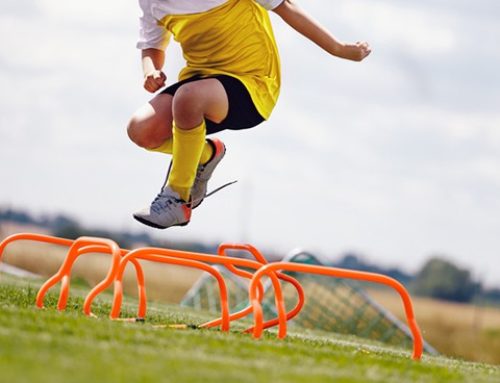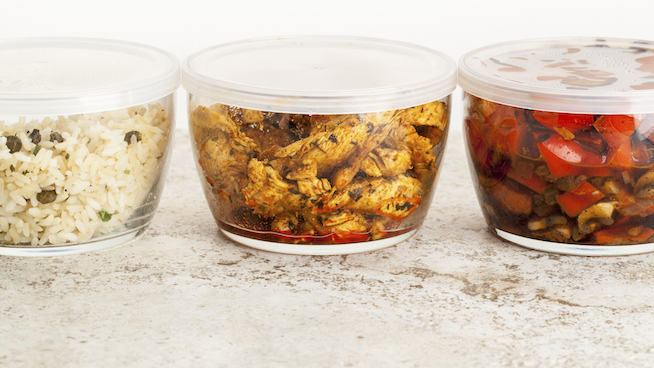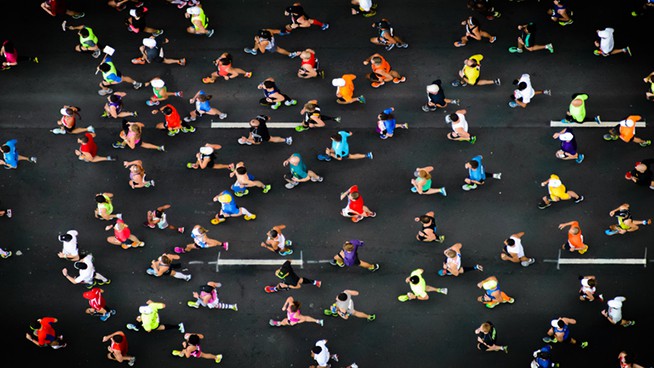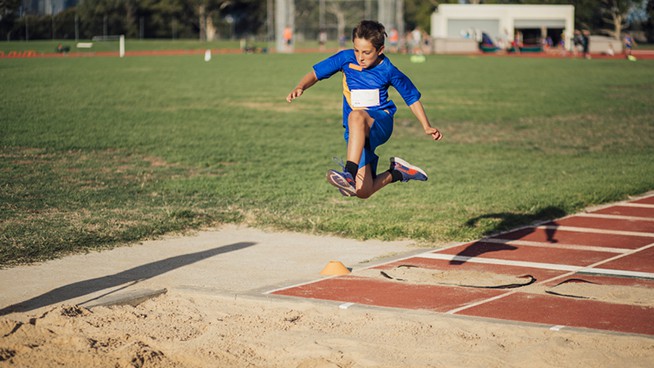Ice Baths: How Cold and How Long?
I was fortunate to play baseball at the high school and collegiate levels. Specifically, I was a pitcher. Now, if you know anything about pitchers, you know we can be some superstitious prima donnas. We can have a super strict warmup routine. We have to have the right music, clothes, bubble gum, snacks, and the right kind of ball to throw. The post-game routine is no different. I always iced my shoulder immediately after a game. Some like to ice the elbow, and some not at all. It is common for athletes of all sports to ice after workouts, practices, or games, but none more than baseball pitchers.
If ice helps recovery, we want to do that as well as we can. The recommendations of when to ice, how long, and how cold haven’t really been studied much until recently. A group of researchers in Australia recently looked at the literature on icing and recovery in sports and came to some conclusions. If you are an athlete that is serious about improving your performance, you should be interested in improving your recovery methodology. Here’s how to do that with ice.
Types of Icing
You’ve probably put ice on yourself for various reasons. From post-leg day pains to boo boo’s, ice can be a temporary cure-all for many ailments. Taking cold showers has become quite popular for health benefits as well. For athletes, nothing is more iconic than total body immersion in an ice bath. Ice baths are superior, as there’s no doubt of “missing a spot.” Ice packs and bags can be difficult to keep in the right place, and they never get the entire joint cold. Ice baths cover everything, not just one specific body part. The findings from this study are in regards to total body submersion. Still, we can also apply the same logic to icing individual muscles or joints. Not everyone can jump in an ice bath after a game. Sometimes icing a shoulder or knee is all you can do. That’s fine; just know that ice baths are more effective, and this article is about being as effective as possible.
When?
Contrary to popular belief, icing immediately after a game, workout, or even injury isn’t the best time to use the modality. After a game or an injury, the affected muscle or body part swells up and becomes inflamed. This is actually a good thing. It is swollen because it is full of fresh oxygen and nutrient-rich blood. This helps nourish the injured area, helping it to recover. Inflammation gets a bad wrap, but initially, it’s the good guy. Chronic inflammation that sticks around too long is the real enemy. And that’s why I recommend holding off icing for at least a couple of hours. We want that healthy new blood and swelling to do its magic, then use ice later to kick it out. Icing a few hours post-game or workout is more ideal for recovery.
How Cold and How Long?
The research shows that the best results appear to come from a contrast of icing on and off, and the recommended optimal temperate for the water is about 50 degrees Fahrenheit. The athlete should immerse the whole body, keeping the head above water for 5 minutes. After five minutes, sit at room temperature for two minutes and return for 5 more minutes in the water. Then you’re done! No more, no less. Two bouts of 5 minutes of cold water appear optimal for muscle recovery 24, 48, and 72 hours after the stimulus of a workout or game.
Contrast baths may be even more helpful if you have access to it and really want to take things to the next level. This time, you can use a hot tub with temperatures of 100-104 degrees Fahrenheit. For this method, the athlete will sit in the cold tub for 5 minutes, immediately get in the hot tub for 5 minutes, and repeat a second round. This method shows promising results as well, but most athletes will not have such access.
In Short
As said earlier, serious athletes train hard. And any athlete that works hard should also be invested in everything else that goes into their performance, such as nutrition and recovery methods. If you want to get the most out of your recovery, using the latest science on icing such as this can help take your game to the next level. Train harder, recover hard and become a better athlete. Here’s a bullet point review, followed by the conducted research you can refer to.
- water at 50 degrees
- 2 sets of 5-minute total body immersions
- 2 minutes of sitting at room temperate between immersions
RECOMMENDED FOR YOU
MOST POPULAR
Ice Baths: How Cold and How Long?
I was fortunate to play baseball at the high school and collegiate levels. Specifically, I was a pitcher. Now, if you know anything about pitchers, you know we can be some superstitious prima donnas. We can have a super strict warmup routine. We have to have the right music, clothes, bubble gum, snacks, and the right kind of ball to throw. The post-game routine is no different. I always iced my shoulder immediately after a game. Some like to ice the elbow, and some not at all. It is common for athletes of all sports to ice after workouts, practices, or games, but none more than baseball pitchers.
If ice helps recovery, we want to do that as well as we can. The recommendations of when to ice, how long, and how cold haven’t really been studied much until recently. A group of researchers in Australia recently looked at the literature on icing and recovery in sports and came to some conclusions. If you are an athlete that is serious about improving your performance, you should be interested in improving your recovery methodology. Here’s how to do that with ice.
Types of Icing
You’ve probably put ice on yourself for various reasons. From post-leg day pains to boo boo’s, ice can be a temporary cure-all for many ailments. Taking cold showers has become quite popular for health benefits as well. For athletes, nothing is more iconic than total body immersion in an ice bath. Ice baths are superior, as there’s no doubt of “missing a spot.” Ice packs and bags can be difficult to keep in the right place, and they never get the entire joint cold. Ice baths cover everything, not just one specific body part. The findings from this study are in regards to total body submersion. Still, we can also apply the same logic to icing individual muscles or joints. Not everyone can jump in an ice bath after a game. Sometimes icing a shoulder or knee is all you can do. That’s fine; just know that ice baths are more effective, and this article is about being as effective as possible.
When?
Contrary to popular belief, icing immediately after a game, workout, or even injury isn’t the best time to use the modality. After a game or an injury, the affected muscle or body part swells up and becomes inflamed. This is actually a good thing. It is swollen because it is full of fresh oxygen and nutrient-rich blood. This helps nourish the injured area, helping it to recover. Inflammation gets a bad wrap, but initially, it’s the good guy. Chronic inflammation that sticks around too long is the real enemy. And that’s why I recommend holding off icing for at least a couple of hours. We want that healthy new blood and swelling to do its magic, then use ice later to kick it out. Icing a few hours post-game or workout is more ideal for recovery.
How Cold and How Long?
The research shows that the best results appear to come from a contrast of icing on and off, and the recommended optimal temperate for the water is about 50 degrees Fahrenheit. The athlete should immerse the whole body, keeping the head above water for 5 minutes. After five minutes, sit at room temperature for two minutes and return for 5 more minutes in the water. Then you’re done! No more, no less. Two bouts of 5 minutes of cold water appear optimal for muscle recovery 24, 48, and 72 hours after the stimulus of a workout or game.
Contrast baths may be even more helpful if you have access to it and really want to take things to the next level. This time, you can use a hot tub with temperatures of 100-104 degrees Fahrenheit. For this method, the athlete will sit in the cold tub for 5 minutes, immediately get in the hot tub for 5 minutes, and repeat a second round. This method shows promising results as well, but most athletes will not have such access.
In Short
As said earlier, serious athletes train hard. And any athlete that works hard should also be invested in everything else that goes into their performance, such as nutrition and recovery methods. If you want to get the most out of your recovery, using the latest science on icing such as this can help take your game to the next level. Train harder, recover hard and become a better athlete. Here’s a bullet point review, followed by the conducted research you can refer to.
- water at 50 degrees
- 2 sets of 5-minute total body immersions
- 2 minutes of sitting at room temperate between immersions











